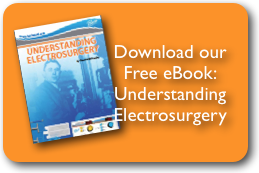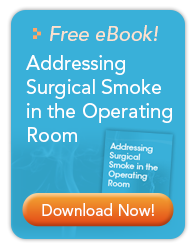 Just as not every cola soft drink is a Coke® and not every facial tissue is a Kleenex®, not every electrosurgical generator is a Bovie®. These are three examples of legally registered, trademarked products that have, through common use, become genericized.
Just as not every cola soft drink is a Coke® and not every facial tissue is a Kleenex®, not every electrosurgical generator is a Bovie®. These are three examples of legally registered, trademarked products that have, through common use, become genericized.
Aspirin, with a capital "A," is a registered, trademarked name owned by German company Bayer in about 80 counties in the world for the compound acetylsalicylic acid, which they developed and brought to market. With a lower-case letter "a," however, aspirin has become a generic name for the same compound. Bayer lost its trademarked status in about a dozen countries, including the U.S., on both aspirin and heroin as part of the post-World War One reparations set out at the Treaty of Versailles in 1919.
Not too many years later, in the mid-1920s, Dr. William T. Bovie created a device known today as the Bovie® electrosurgical generator. Holding a doctorate in plant physiology and working at Harvard University, his alma mater, Dr. Bovie was working on methods of passing high frequency alternating currents through tissue for the purposes of cutting and coagulating. The main benefit of this new technology was the capability of making precision cuts into live tissue with only a limited amount of associated blood loss.
Dr. Harvey W. Cushing, a pioneer in the field of brain surgery and known today as "the father of neurosurgery," was a contemporary of Dr. Bovie. In an operation to remove a brain tumor from a patient at Boston's Peter Bent Brigham Hospital on September 28, 1926, Dr. Cushing was unsuccessful due to the inordinate amount of cranial bleeding that occurred. Three days later, with the aid of Dr. Bovie and his new electrosurgical generator, Cushing was able to re-operate with a highly successful result occurring, with nearly none of the bleeding that had been experienced in the previous attempt.
Today, Bovie Medical continues on in the fine tradition of its namesake, manufacturing the number one line of electrosurgical equipment and accessories in the world. Bovie Medical has made significant improvements to the technology through the years, although the basic principles of cutting, cauterizing, coagulating and fulguration with high frequency alternating currents remain very much the same.
Electrosurgery is accomplished through the use of a power source, (the generator,) connected to one or more specifically designed electrodes such as blades, loops, balls and needles. The process has become common for use in a wide variety of medical specialties, including:
-
Cardiac
-
Plastic Surgery
-
Gynecological
-
Dermatological
-
Ocular
-
Spinal
-
Neuro Surgery
-
Urological
-
And others, including general surgery
When is a Bovie Not a Bovie®?
Just like any old adhesive bandage may be inappropriately referred to as a Band-Aid®, the Bovie Medical electrosurgical generator technology has been so commonly found in the medical arena for decades that some practitioners may take to using the generic form, bovie, to describe any similar apparatus. The proper terminology in this case would be to call a non Bovie® generator by its rightful name, which is an electrosurgical unit, or ESU.
Image courtesy of: Stuart Miles/ Freedigitalphotos.net








